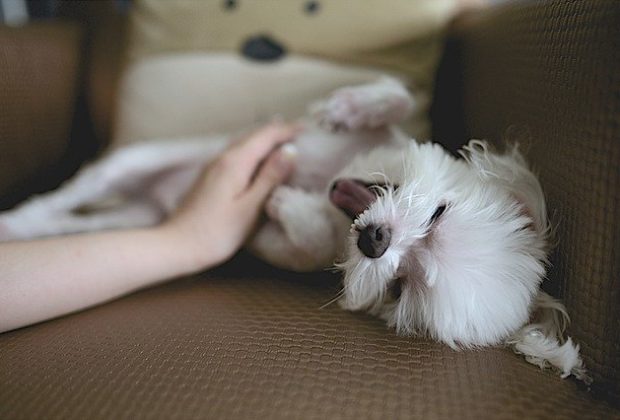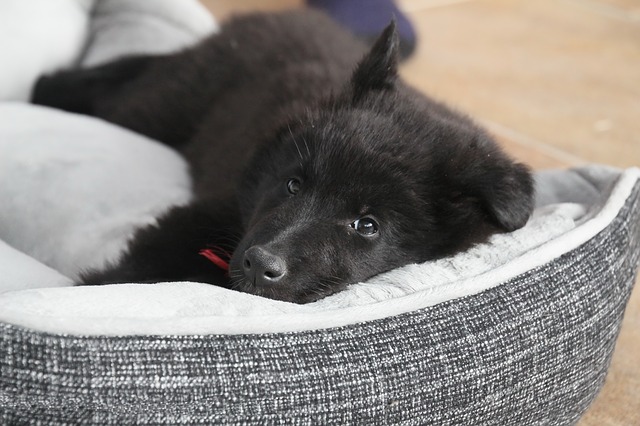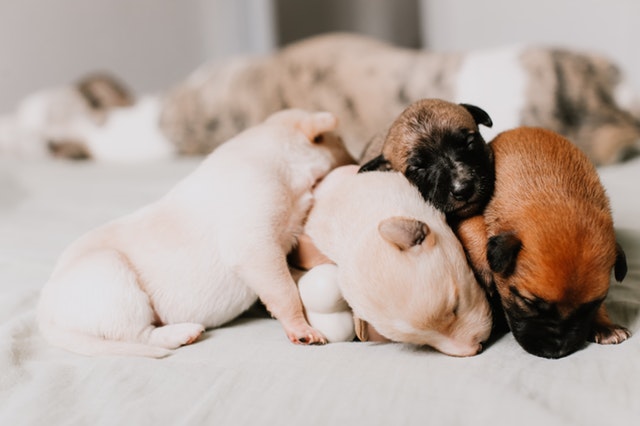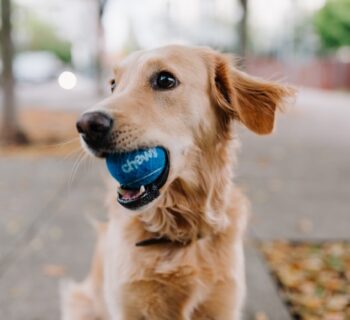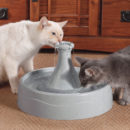If your dog enjoys having his tummy tickled, you may have wondered why do dogs love belly rubs. Well, yes, there is an explanation for it, and it’s not just because it makes them feel good, even though the feel-good reason is a major part of it.
According to experts, belly rubs set off certain reactions in their brains, and these reactions respond to the stimulation of hair follicles. One of the reasons your dog loves being stroked and getting belly rubs is because of the link between hair stroking and social grooming.
Rolling on their backs for belly rubs is also another way dogs exhibit submission towards humans. It is also a sign that your canine trusts you and that they feel good about you and so do not mind being vulnerable around you.
What If My Dog Doesn’t Love Belly Rubs?
Don't force it! While most dogs naturally enjoy rolling over and having their bellies rubbed, it is a behavior that dog owners should never push.
Forcing a canine to roll over or enjoy belly rubs will not only lead to aggression, but it could also cause him to lose trust in you. There are several other ways to have fun and gain your dog's trust. So, if the belly rubs and rolling over isn't your dog's "thing," look into other options.
If you are unsure how comfortable your dog is with getting belly rubs, you can tell by checking how tense he looks when he rolls over. If your dog looks relaxed and floppy, he is comfortable in the position. However, if your dog displays a sign of discomfort, such as hiding his tail between his legs or hunching his body, it is often a sign to stop and let him be.
Also, check to see if your dog moves away or relaxes as soon as you stop. If he does, it is an indicator that he's not comfortable with it. And if he wants more, he'll let you know by going back to the belly up position.
Should I Rub My Dog’s Belly?
If you have a canine that enjoys belly rubs, by all means, rub that belly! If your pet doesn’t seem to enjoy rolling over and getting tickled, you should consider a different activity instead.
Also, if your dog has always loved getting his tummy rubbed or scratched and suddenly doesn’t seem to enjoy it anymore, it may be a sign of a problem with their tummy or back pain. You should have it looked at to rule out any underlying cause.
Apart from those, even though many dogs enjoy having their stomachs rubbed, there are dogs that will do just fine without regular belly strokes. If your pet does not enjoy having its tummy tickled, it is rarely a sign of a problem. It may be a matter of individual preference.
But generally, though, when dogs ask for belly rubs or enjoy rolling over and getting rubbed, it is often a way to show how comfortable they feel with you and other family members.
Why Does My Dog Kick His Legs When Getting Rubbed?
Your dog isn't really “kicking” when getting rubbed. It is an involuntary action known as a “scratch reflex”. This reflex is commonly used on dogs to test for nerve and spinal problems. It works by activating the nerves under his skin that are connected to the spinal cord. The nerves signal your dog to kick his legs in order to get rid of the irritant. It is the same response when they have a bug on their backs.
How the Scratch Reflex Works
In dogs, the scratch reflex protects them from irritants on their bodies.Just like humans, dogs have collections of neural pathways that connect to their spinal cord, and when these are activated, they signal the brain to kick. This automatic response helps to keep your dog protected from danger. How? The spinal cord triggers the kick response before the conscious brain arrives at a decision. It is basically a matter of self-preservation for your dog.
The next time your furry friend kicks when getting a belly rub, know that the response is entirely involuntary. He is not annoyed by your touches or being ticklish. It’s just reflex kicking in.
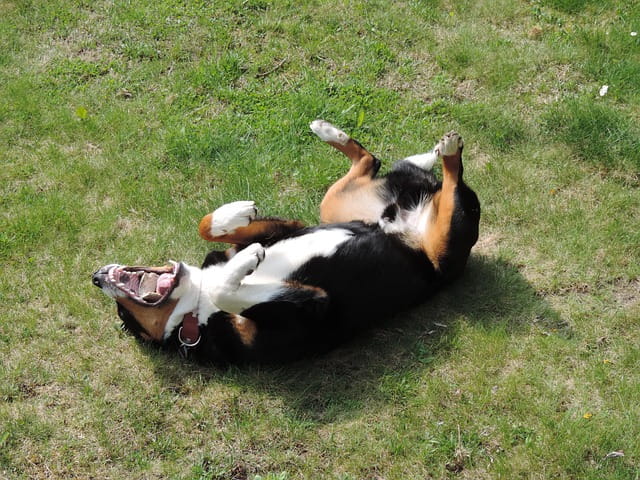
The Difference Between a Submissive Behavior When a Dog Rolls over and Wanting a Belly Rub
When your dog rolls over voluntarily, it may be hard to tell if he needs a belly rub or simply displaying submissive behavior. Therefore, it is essential to know exactly what your dog wants before opting to pet it.
When dogs adopt a submissive behavior, they are usually trying to diffuse social tension by letting you know that they're not a threat. If you misinterpret this behavior and decide to pet it, it can cause the dog to grow more nervous, considering that he's being touched in a vulnerable area of his body.
If your dog wants a belly rub, he may show any or all of the following body language;
- Loose and wiggly body posture
- Relaxed with mouth open and usually with tongue flopping around
- Bright, open or squinty eyes that may usually not be staring at anything
- Relaxed wagging tail
A dog showing submissive behavior may do the following:
- Tense, low body postures that may include crouching or freezing
- Pulled back lips or closed mouth accompanied sometimes with lots of lip-licking and tongue-flicking
- Eyes opened wide and staring into the distance. The whites of their eyes may also show when staring at you, and this is done without turning their heads. Or you may notice their eyes tense and become squinty when staring.
- Their tails may be tucked, wagging, or still but with tension at the base of the tail.
- You may also hear a quiet or soft whining from a dog in that position.
Finally, we must add here that a wagging tail isn't necessarily a sign of happiness, especially in these situations. A dog may wag his tail but a stiff, fast tail wag cannot be said to be the same as a loose, full-body tail wag.
About the Author
Kirsten Heggarty
Kirsten created The Pet Handbook with the aim of sharing her knowledge about pets, pet food, healthy habits, and more. All of her advice is based on years of her own experience with her pets, and feedback that she has received from grateful readers about her tips. If you want to know more please read the About Me page.

